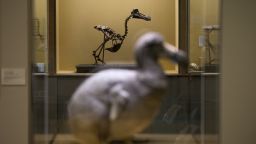Science
Arctic Seals Face Extinction as Global Bird Populations Decline

The latest findings from the International Union for Conservation of Nature (IUCN) reveal alarming trends in global biodiversity. Released on March 15, 2025, during the IUCN World Conservation Congress in Abu Dhabi, the updated Red List of Threatened Species indicates that over a quarter of all assessed species, including animals, plants, and fungi, now face extinction risks. Among the most affected are Arctic seals, which are increasingly threatened by climate change.
As the Arctic warms at a rate four times faster than the global average, the impact on marine life is profound. The IUCN reports that three species of Arctic seals are now on the brink of extinction. The hooded seal has been classified as endangered, while the bearded seal and harp seal are listed as near-threatened. These seals depend on sea ice for breeding and as a platform to access food. The retreat of sea ice not only endangers these species but also disrupts the entire Arctic ecosystem, affecting predators like polar bears that rely on seals as a primary food source.
Jon Paul Rodríguez, chair of IUCN’s Species Survival Commission, highlighted the urgency of the situation, stating, “The red list records symptoms of extinctions. It’s like a thermometer when you are sick… you’re measuring something that tells you there’s something wrong; we have to act.” He emphasized the widespread forces driving biodiversity loss, noting that while solutions exist, insufficient resources hinder effective responses.
Bird Species in Global Decline
The report also sheds light on the troubling state of bird populations worldwide. It reveals that 61% of bird species are experiencing declines, a significant increase from 44% in the previous assessment in 2016. Habitat loss, primarily due to agriculture and logging, is the leading cause of this decline. Regions like Madagascar, West Africa, and Central America are particularly at risk due to the rapid loss of tropical forests.
Some species, such as the black-casqued hornbill found in West and Central Africa, face additional threats from hunting and illegal wildlife trade. Ian Burfield, global science coordinator at BirdLife International, commented on the findings, urging governments to take decisive action. He stated, “These results show how deep the biodiversity crisis has become.”
Birds play a critical role in ecosystems, providing services such as pollination, pest control, and seed dispersal. For example, hornbills can disperse up to 12,700 large seeds per kilometer each day, underscoring their importance in maintaining healthy ecosystems and restoring degraded areas.
A Glimmer of Hope: Green Sea Turtle Recovery
Despite the grim outlook for many species, the report offers a note of optimism with the recovery of the green sea turtle. Once classified as endangered, this species is now listed as of least concern, thanks to successful conservation efforts. Since the 1970s, populations have increased by approximately 28%.
Efforts to protect nesting females, their eggs, and combat illegal trade have proven effective, particularly in locations such as Ascension Island, Brazil, Mexico, and Hawaii. However, conservationists warn that threats remain, as coastal and marine habitats continue to face development pressures and climate change impacts.
Rodríguez underlined the importance of the Red List as a foundational tool for developing conservation strategies, stating, “Resources are limited and we have to prioritize. We have to think of ways to cleverly invest the money where it will have the biggest impact.”
The IUCN World Conservation Congress, held every four years, brings together conservation leaders, academics, Indigenous peoples, and decision-makers to address pressing environmental challenges. Rodríguez noted that the congress serves as a platform to harness diverse knowledge and insights, shaping global conservation priorities.
Looking ahead, the upcoming UN Climate Change Conference (COP30) in Brazil is poised to be a critical venue for discussions on the intersection of climate change and biodiversity. Rodríguez emphasized the connection between the two, saying, “We see climate and biodiversity as two sides of the same coin: damaging biodiversity affects the climate, improving biodiversity helps with the climate.”
As the world confronts these pressing issues, the findings of the Red List serve as a reminder of the urgent need for coordinated conservation action to protect our planet’s fragile ecosystems.
-

 Technology5 months ago
Technology5 months agoDiscover the Top 10 Calorie Counting Apps of 2025
-

 Technology3 weeks ago
Technology3 weeks agoOpenAI to Implement Age Verification for ChatGPT by December 2025
-

 Health3 months ago
Health3 months agoBella Hadid Shares Health Update After Treatment for Lyme Disease
-

 Health4 months ago
Health4 months agoAnalysts Project Stronger Growth for Apple’s iPhone 17 Lineup
-

 Health4 months ago
Health4 months agoErin Bates Shares Recovery Update Following Sepsis Complications
-

 Technology5 months ago
Technology5 months agoDiscover How to Reverse Image Search Using ChatGPT Effortlessly
-

 Technology3 months ago
Technology3 months agoElectric Moto Influencer Surronster Arrested in Tijuana
-

 Technology5 months ago
Technology5 months agoMeta Initiates $60B AI Data Center Expansion, Starting in Ohio
-

 Technology2 months ago
Technology2 months agoDiscover 2025’s Top GPUs for Exceptional 4K Gaming Performance
-

 Technology5 months ago
Technology5 months agoRecovering a Suspended TikTok Account: A Step-by-Step Guide
-

 Health5 months ago
Health5 months agoTested: Rab Firewall Mountain Jacket Survives Harsh Conditions
-

 Lifestyle5 months ago
Lifestyle5 months agoBelton Family Reunites After Daughter Survives Hill Country Floods





















